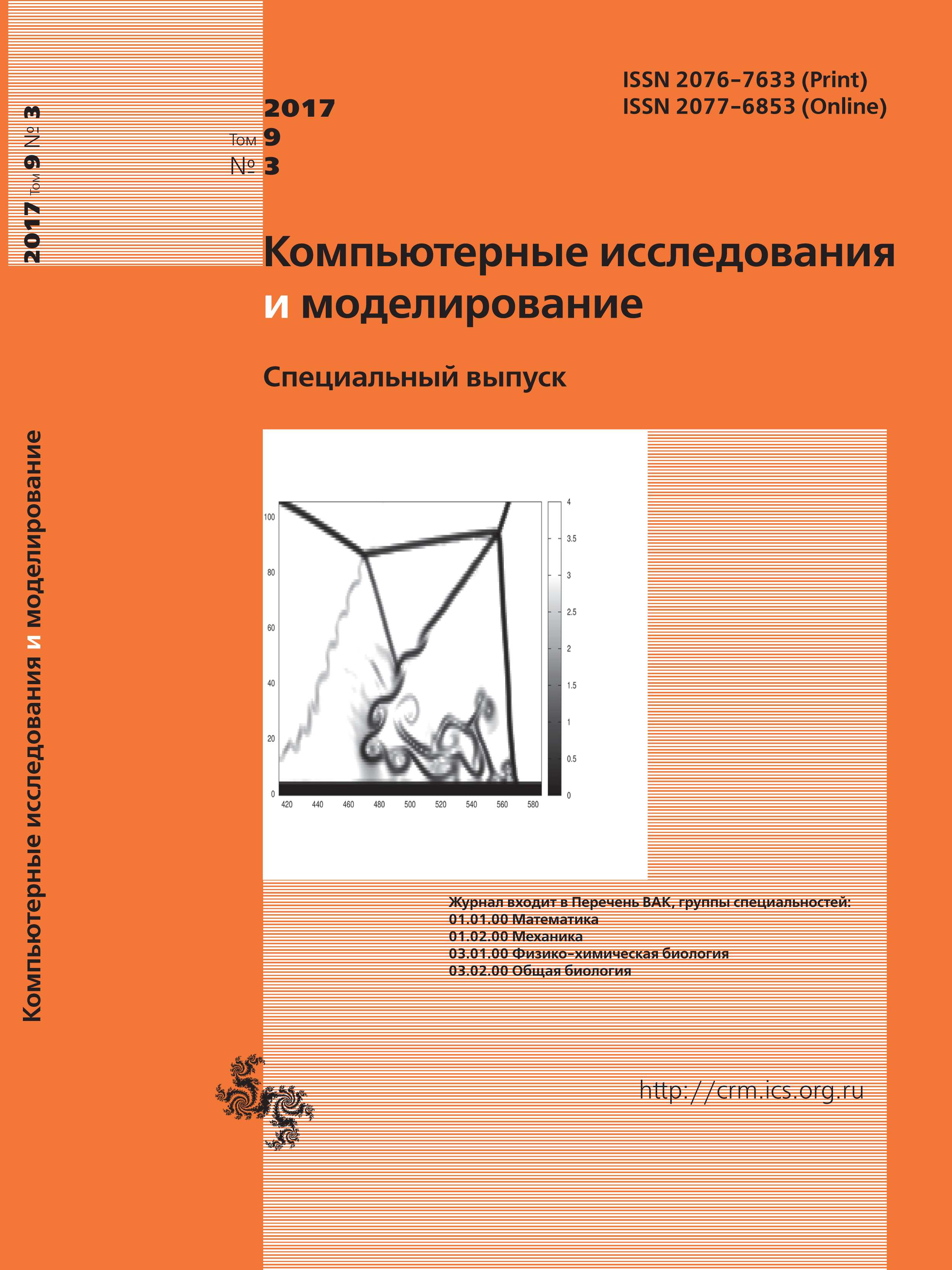All issues
- 2025 Vol. 17
- 2024 Vol. 16
- 2023 Vol. 15
- 2022 Vol. 14
- 2021 Vol. 13
- 2020 Vol. 12
- 2019 Vol. 11
- 2018 Vol. 10
- 2017 Vol. 9
- 2016 Vol. 8
- 2015 Vol. 7
- 2014 Vol. 6
- 2013 Vol. 5
- 2012 Vol. 4
- 2011 Vol. 3
- 2010 Vol. 2
- 2009 Vol. 1
Mathematical modeling of thrombin propagation during blood coagulation
In case of vessel wall damage or contact of blood plasma with a foreign surface, the chain of chemical reactions called coagulation cascade is launched that leading to the formation of a fibrin clot. A key enzyme of the coagulation cascade is thrombin, which catalyzes formation of fibrin from fibrinogen. The distribution of thrombin concentration in blood plasma determines spatio-temporal dynamics of clot formation. Contact pathway of blood coagulation triggers the production of thrombin in response to the contact with a negatively charged surface. If the concentration of thrombin generated at this stage is large enough, further production of thrombin takes place due to positive feedback loops of the coagulation cascade. As a result, thrombin propagates in plasma cleaving fibrinogen that results in the clot formation. The concentration profile and the speed of propagation of thrombin are constant and do not depend on the type of the initial activator.
Such behavior of the coagulation system is well described by the traveling wave solutions in a system of “reaction – diffusion” equations on the concentration of blood factors involved in the coagulation cascade. In this study, we carried out detailed analysis of the mathematical model describing the main reaction of the intrinsic pathway of coagulation cascade.We formulate necessary and sufficient conditions of the existence of the traveling wave solutions. For the considered model the existence of such solutions is equivalent to the existence of the wave solutions in the simplified one-equation model describing the dynamics of thrombin concentration derived under the quasi-stationary approximation.
Simplified model also allows us to obtain analytical estimate of the thrombin propagation rate in the considered model. The speed of the traveling wave for one equation is estimated using the narrow reaction zone method and piecewise linear approximation. The resulting formulas give a good approximation of the velocity of propagation of thrombin in the simplified, as well as in the original model.
Copyright © 2017 Galochkina T.V., Volpert V.A.
Views (last year): 10. Citations: 1 (RSCI).Indexed in Scopus
Full-text version of the journal is also available on the web site of the scientific electronic library eLIBRARY.RU
The journal is included in the Russian Science Citation Index
The journal is included in the RSCI
International Interdisciplinary Conference "Mathematics. Computing. Education"







